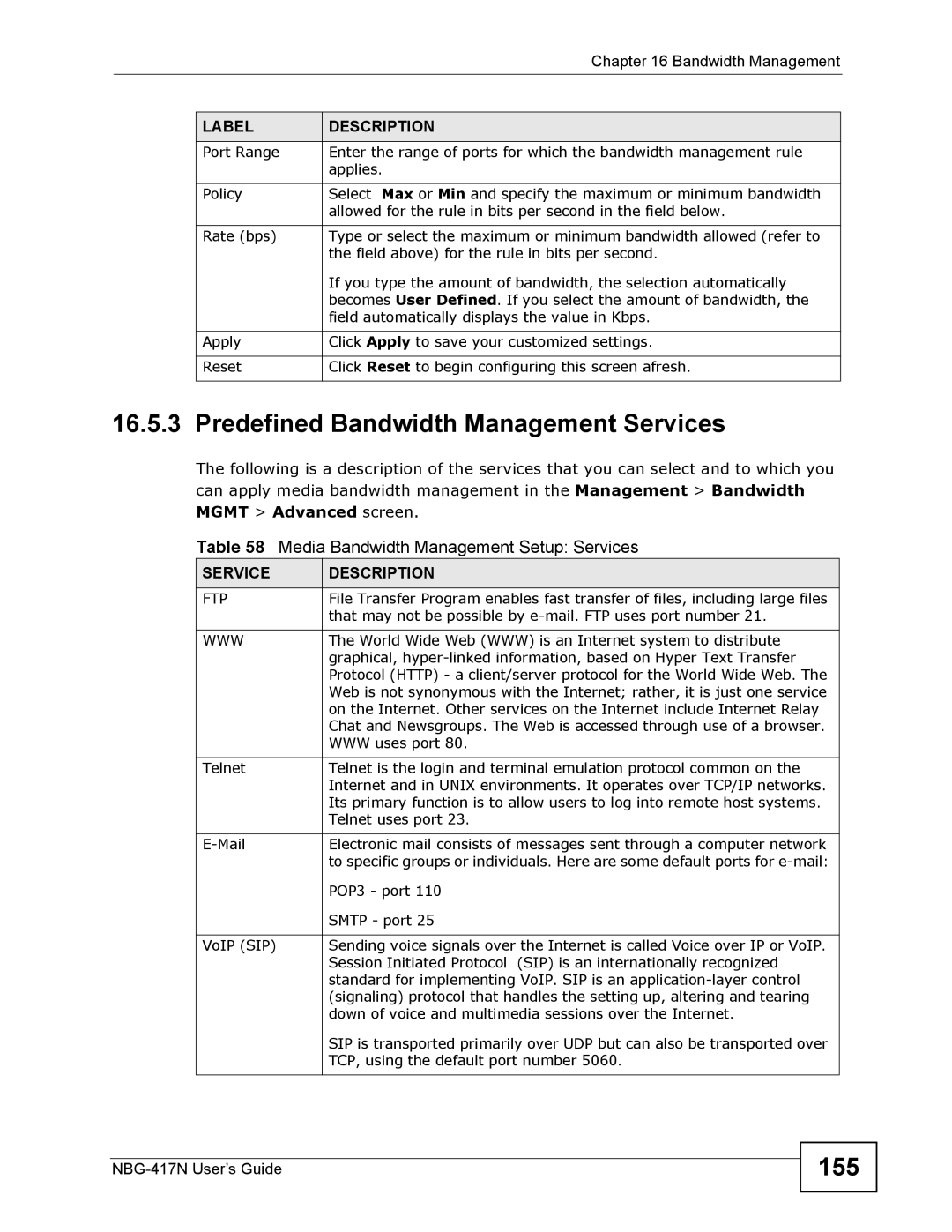|
| Chapter 16 Bandwidth Management |
|
|
|
| LABEL | DESCRIPTION |
| Port Range | Enter the range of ports for which the bandwidth management rule |
|
| applies. |
|
|
|
| Policy | Select Max or Min and specify the maximum or minimum bandwidth |
|
| allowed for the rule in bits per second in the field below. |
|
|
|
| Rate (bps) | Type or select the maximum or minimum bandwidth allowed (refer to |
|
| the field above) for the rule in bits per second. |
|
| If you type the amount of bandwidth, the selection automatically |
|
| becomes User Defined. If you select the amount of bandwidth, the |
|
| field automatically displays the value in Kbps. |
|
|
|
| Apply | Click Apply to save your customized settings. |
|
|
|
| Reset | Click Reset to begin configuring this screen afresh. |
|
|
|
16.5.3 Predefined Bandwidth Management Services
The following is a description of the services that you can select and to which you can apply media bandwidth management in the Management > Bandwidth MGMT > Advanced screen.
Table 58 Media Bandwidth Management Setup: Services
SERVICE | DESCRIPTION |
FTP | File Transfer Program enables fast transfer of files, including large files |
| that may not be possible by |
|
|
WWW | The World Wide Web (WWW) is an Internet system to distribute |
| graphical, |
| Protocol (HTTP) - a client/server protocol for the World Wide Web. The |
| Web is not synonymous with the Internet; rather, it is just one service |
| on the Internet. Other services on the Internet include Internet Relay |
| Chat and Newsgroups. The Web is accessed through use of a browser. |
| WWW uses port 80. |
|
|
Telnet | Telnet is the login and terminal emulation protocol common on the |
| Internet and in UNIX environments. It operates over TCP/IP networks. |
| Its primary function is to allow users to log into remote host systems. |
| Telnet uses port 23. |
|
|
| Electronic mail consists of messages sent through a computer network |
| to specific groups or individuals. Here are some default ports for |
| POP3 - port 110 |
| SMTP - port 25 |
|
|
VoIP (SIP) | Sending voice signals over the Internet is called Voice over IP or VoIP. |
| Session Initiated Protocol (SIP) is an internationally recognized |
| standard for implementing VoIP. SIP is an |
| (signaling) protocol that handles the setting up, altering and tearing |
| down of voice and multimedia sessions over the Internet. |
| SIP is transported primarily over UDP but can also be transported over |
| TCP, using the default port number 5060. |
|
|
